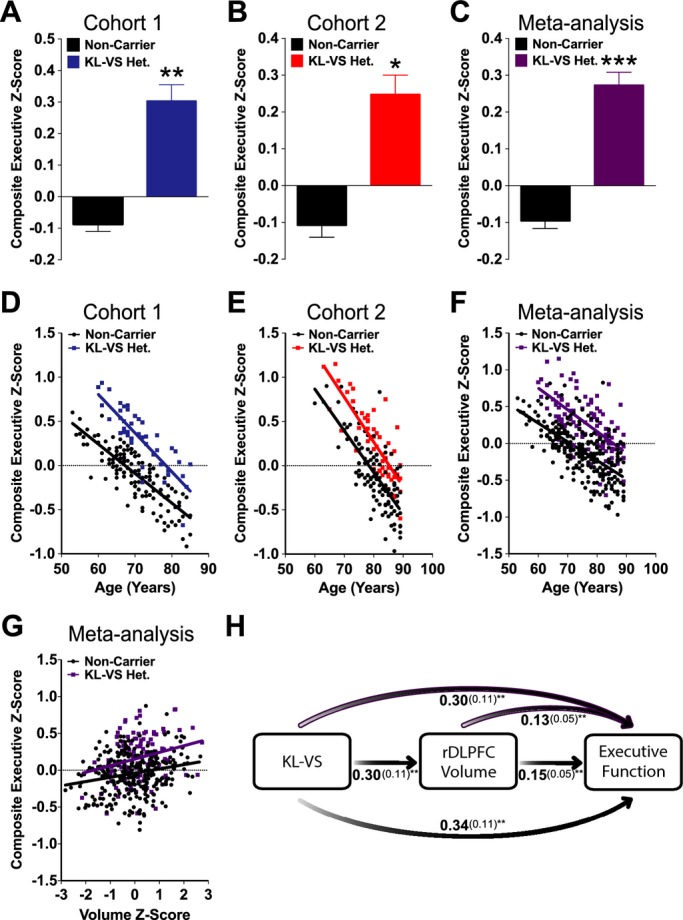Figure 3.

KL-VS heterozygosity is associated with enhanced executive function in two independent cohorts and meta-analysis of healthy older adults, independent of age. KL-VS heterozygotes showed higher composite executive Z-scores than noncarriers in (A) Cohort 1, (B) Cohort 2, and (C) meta-analysis. Data are means ± SEM and were analyzed by a linear model adjusting for age, education, sex, APOE ε4 carrier status and (in C) center. *P < 0.05, **P < 0.01, ***P < 0.001 versus noncarrier (two-tailed). (D–F) KL-VS heterozygosity-associated enhancements in executive function were observed across all ages in (D) Cohort 1 (two-tailed P = 2.06 × 10−3), (E) Cohort 2 (P = 0.04), and (F) meta-analysis (P = 4.71 × 10−4). (G) In meta-analysis, right dorsolateral prefrontal cortex (rDLPFC) volume was positively correlated with composite executive Z-scores in both KL-VS heterozygotes and noncarriers (P = 0.003). (H) Mediation analysis of KL-VS heterozygosity and rDLPFC volume as predictors of executive function in Cohorts 1 and 2. Bivariate (black shaded arrows, middle and bottom) and multivariate (purple outlined arrows, top) analyses of direct and indirect effects of KL-VS heterozygosity and rDLPFC volume demonstrated that each were significant predictors of executive function, indicating that KL-VS-associated enhancement in executive function was partially mediated by rDLPFC volume. Estimated effects (beta, in bold) of genotype and/or volume as predictors of cognition, along with the standard error (in parentheses), are provided for each analysis. **P < 0.01 (two-tailed).
